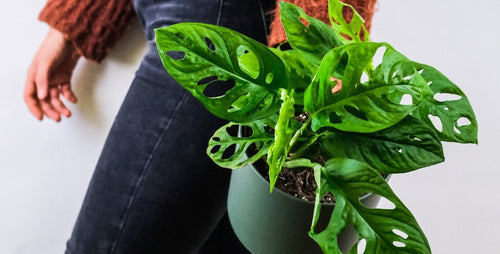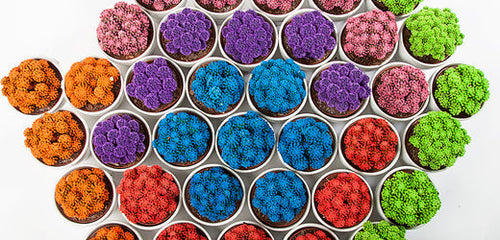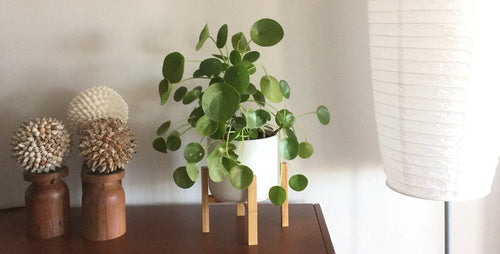One of the thrills of traveling to far-away locations is to experience the colors and textures of unfamiliar indigenous leaves and flowers. But taking a plant home from the tropics is a customs no-no. We’re sorry to say that smuggling houseplants home in your underwear is both uncomfortable and illegal.
But horticultural souvenir seekers can take heart. There’s a simple way to enjoy the leafy luxuries of the tropics at home: Buy a plant once you get home that’s native to the warm, wonderful location you visited. Or take a vicarious vacation to a warmer climate by spending a little time with a Costa Farms houseplants with roots in exotic locations.
Here’s how:
EXOTIC
PLANT: Chinese Evergreen
ALIAS: Aglaonema
NATIVE COUNTRY: Thailand, China, Philippines (most of Asia)
HOME AND HISTORY: You’ll need to book airfare to Bangkok or Manilla to run into this leafy treasure in
the wild. Once you are there, you’ll also need to trek deep into the jungles to discover Chinese evergreen growing in
the low light beneath the jungle canopy. And that’s exactly where plant hunters from England in 1885 first discovered
Chinese evergreen. They brought it home to the Royal Botanic Gardens, Kew -- it’s first introduction to the West.
Chinese evergreen has been cultivated and hybridized ever since -- and the rest is houseplant history.
GET
THE TROPICS AT HOME: Add a burst of color in your décor with Chinese evergreen. Classic varieties come in
hues of green with muted silver bands. Or dark green leaves with creamy stripes. Or silver-kissed leaves with green
banding. New hybrids offer glamour colors such as painterly splotches of red mixed with pink on a green background.
Chinese evergreen is a leafy plant that can compete with any flower in a beauty contest.
WHY IT'S
EASY: This beautiful plant can be ignored and still look like you’ve lavished it with care. It grows in dim
conditions so it can adorn rooms with little natural light. And it can go for long bouts without watering, so if you
travel or are a bit forgetful, this plant won’t mind.
EXOTIC PLANT: Ponytail Palm
ALIAS:
Elephant foot palm
NATIVE COUNTRY: Mexico
HOME AND HISTORY:
Travel the road to Veracruz in Eastern Mexico to meet a ponytail palm in his indigenous surroundings; this
plant is also native to other eastern Mexican states including Tamaulipas and San Luis Potosi. Although ponytail palm is
called a palm, it is not related to true palms. Mexico has several long-lived ponytail palms that are more than 350
years old -- talk about a lifelong houseplant friend!
GET THE TROPICS AT HOME: You’ll love
the odd and lovely shape of the ponytail palm. It has a large base (hence the nick name elephant foot palm) with a
tousle of fine-leafed foliage at the top (hence the nick name ponytail palm). It adds sculptural as well as foliar
beauty to your home.
WHY IT'S EASY: The finely coiffed ponytail palm may look like it is high
maintenance, but it actually needs very little care -- low levels of light and occasional water. Because this is an arid
plant by nature, it can take periods of dryness. Ponytail palm grows slowly so it won’t take over your living room.
PLANT: Snake Plant
ALIASES: Sansevieria, Mother-in-Law’s Tongue, Devil’s Tongue, St. George’s Sword
NATIVE
COUNTRY: Africa
HOME AND HISTORY: Snake plant calls Western Africa home; if you have a
couple of weeks, travel by bus from Nigeria to the Congo to see all of its native land. Named by the Italian plant
hunter and botanist Vincenzo Petagna for his patron Pietro Antonio Sanseverino, Count of Chiaromonte (1724-1771), the
plant was originally named Sanseverinia. In Africa, snake plant is as useful as it is beautiful; it is used for fiber
production (like hemp). And this plant is admired worldwide: In Korea, for instance, snake plants are given as gifts to
new businesses. But it is also a beloved plant in America. In fact, a snake plant appears in several paintings by
American painter Grant Wood. Woman with Plants and can also be seen on the porch behind the famous couple in the
painting American Gothic.
GET THE TROPICS AT HOME: This plant could be nominated for the
Easiest Houseplant Award. Enjoy them anywhere! Its long, spearlike leaves are attractive in all settings, making snake
plant one of the most popular houseplants in the world.
WHY IT'S EASY: Snake plant thrives in a
variety of light conditions, from low light to full sun. And it will tolerate benign neglect. Having one in your home
helps purify the air, too!
PLANT: ZZ Plant
ALIASES: Eternity Plant,
Fat Boy, Aroid Palm
NATIVE COUNTRY: Africa
HOME AND HISTORY: It’s a long
flight to Nairobi (especially in a middle seat), but that’s where you need to go to find ZZ plant in its home. This
tough plant is native to Eastern Africa -- from Kenyon to South Africa. It was identified in 1829 as a member of the
caladium family (because it had a large potato-like rhizome from which it grows). But later it got its own botanical
name (the large and hard-to-pronounce Zamioculcas zamiifolia) which, for sake of ease, was quickly shortened to ZZ.
GET THE TROPICS AT HOME: ZZ is one of the most durable houseplants EVER. It requires next-to-nothing
care and thrives in almost all conditions. Its shiny leaves and sturdy stems make it an attractive houseplant in every
room. It likes shaded locations, so it's ideal for dimly lit areas in the house.
WHY IT'S EASY:
ZZ evolved in harsh native conditions where rainfall was scarce. So this forgiving plant will thrive on neglect
in your home. Because the underground rhizome stores water, ZZ plant can go for weeks without water. Although it does
like an occasional watering -- every other week or so.
PLANT: Sago Palm
ALIASES: Japanese Sago
Palm, King Sago Palm
NATIVE COUNTRY: Japan
GET THE TROPICS AT HOME: Get on the
bullet train from Tokyo, open up your bento box lunch, and sit back in your seat while you travel to southern Japan
where Sago palm is native (along with other Asian locations such as southern China and Indonesia). Sago palm is an
ancient plant. In fact, it is in the family of cycads which date back 200 million years, predating dinosaurs. They are
called living fossils that can be traced back as far as the Mesozoic period. They have changed very little over the
years. There are also male and female versions of the plant. The females eventually produce a large basketball-sized
seed head.
WHY IT'S EASY: Sago palms outlived the dinosaurs for one (so surviving your
living room should be a cinch!). These durable plants are long lived and slow growing. Plan to enjoy it for your whole
life.
Written by Karen Weir-Jimerson

















